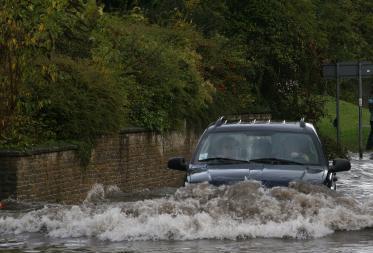Flood defences make little difference as the greatest threat is an overloaded drainage system
?Just when you thought it was safe to go back to the water, the spectre of flooding is looming large once again. The Met Office’s confirmation that this summer (with 58% higher rainfall than average) has been the wettest in history may have hoodwinked some of us into thinking that the flooding in June and July was of equally exceptional proportions.
While we are not likely to see an immediate repeat of the events of this year in terms of volume, recent reports have confirmed that the rains will have a far-reaching affect that stretches way beyond June and July.
Insurers, in fact, are bracing themselves for further flooding this autumn – and potentially hundreds of millions of pounds more in claims.
This will put many household books, already lurching into the red, under increasing strain.
Though the floods have proved that insurers’ pockets are deep, they have also proved that, despite the talk of flood management and flood defences, there is little at times the authorities can do to avoid being left at the mercy of the elements.
Until now, the role of groundwater in flooding has received very little attention. Wetter winters, a greater frequency of storm events, and further housing development could mean more groundwater-related flooding in the future
“The reality is that flood defences could be built as high as the proverbial walls of Jericho, and in many cases it would make no difference
That future could be now, with the Centre of Ecology and Hydrology revealing that groundwater levels, usually on the decline between May and September, have already exceeded their winter levels.
Research has revealed that rising levels of carbon dioxide in the atmosphere are restricting plants’ ability to soak up water. Coupled with this is the likelihood of more run-off into rivers, streams and drains, which could lead to flash flooding – regardless of the season.
Soils are at their wettest since records began in 1961, and this has forced the Environment Agency to issue further flood warnings across England and Wales because of the huge amounts of water sloshing around underground.
It will not take much to tip the balance. Even light rain, if regular enough, could precipitate flooding in the spring. Yet insurers, understandably cagey on the subject of incurring further losses, say it is too early to forecast what will happen.
And to a certain extent they are right – no one can predict where rain will fall. But, fall it will.
The claims bill seems to have been capped at around £3.25bn, but the true economic impact on business interruption and demand surge has yet to fully emerge, by which time, of course, it is likely insurers will have been beset by a more recent deluge.
“It will not take much to tip the balance. Even light rain, if regular enough, could precipitate flooding in the spring.
Insurers concede that, at least in the short-term, not much can change. Though the government is framing its ‘lessons learned’ response to the floods, it is highly unlikely it will reveal anything of value, especially to insurers.
The reality is that flood defences could be built as high as the proverbial walls of Jericho, and in many cases it would make no difference.
Indeed, what the June and July floods have demonstrated conclusively is that inadequate drainage poses the greatest threat to homes.
Catastrophe experts estimate that up to 80% of flooding is caused by blocked drains. Clearly, something must be done to rectify the problem.
The brouhaha over flood defences, though necessary, may have ended up just deflecting vital attention elsewhere.
The peril of flooding is as complicated to map as it is an imminent threat. While the floods may come again this autumn – and at ever shorter intervals in the future – it is critical that the government tackles the problems it is capable of solving.
This means drainage, planning, and creating greater transparency between all agencies that deal with flood management, including defences.




































No comments yet